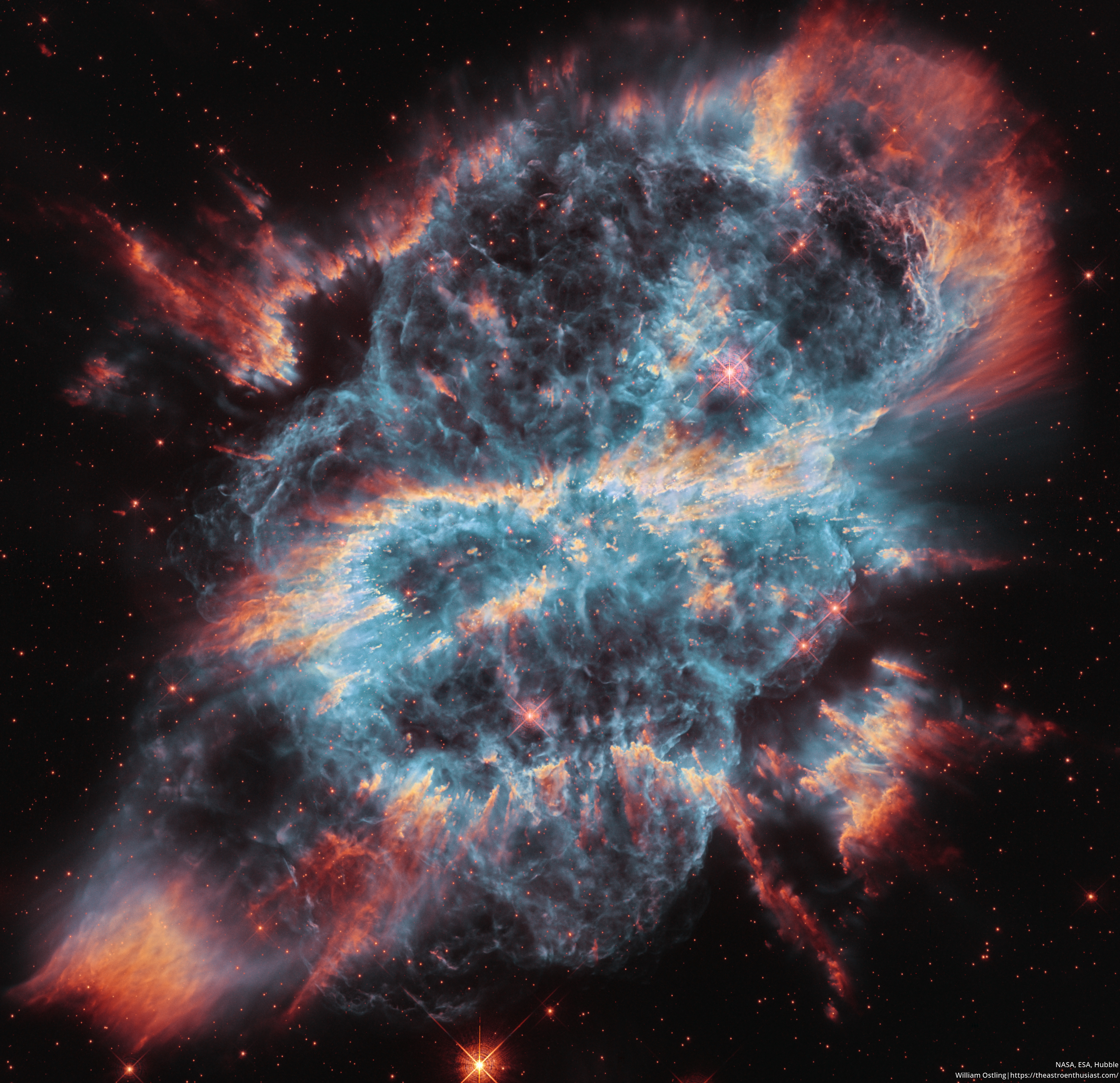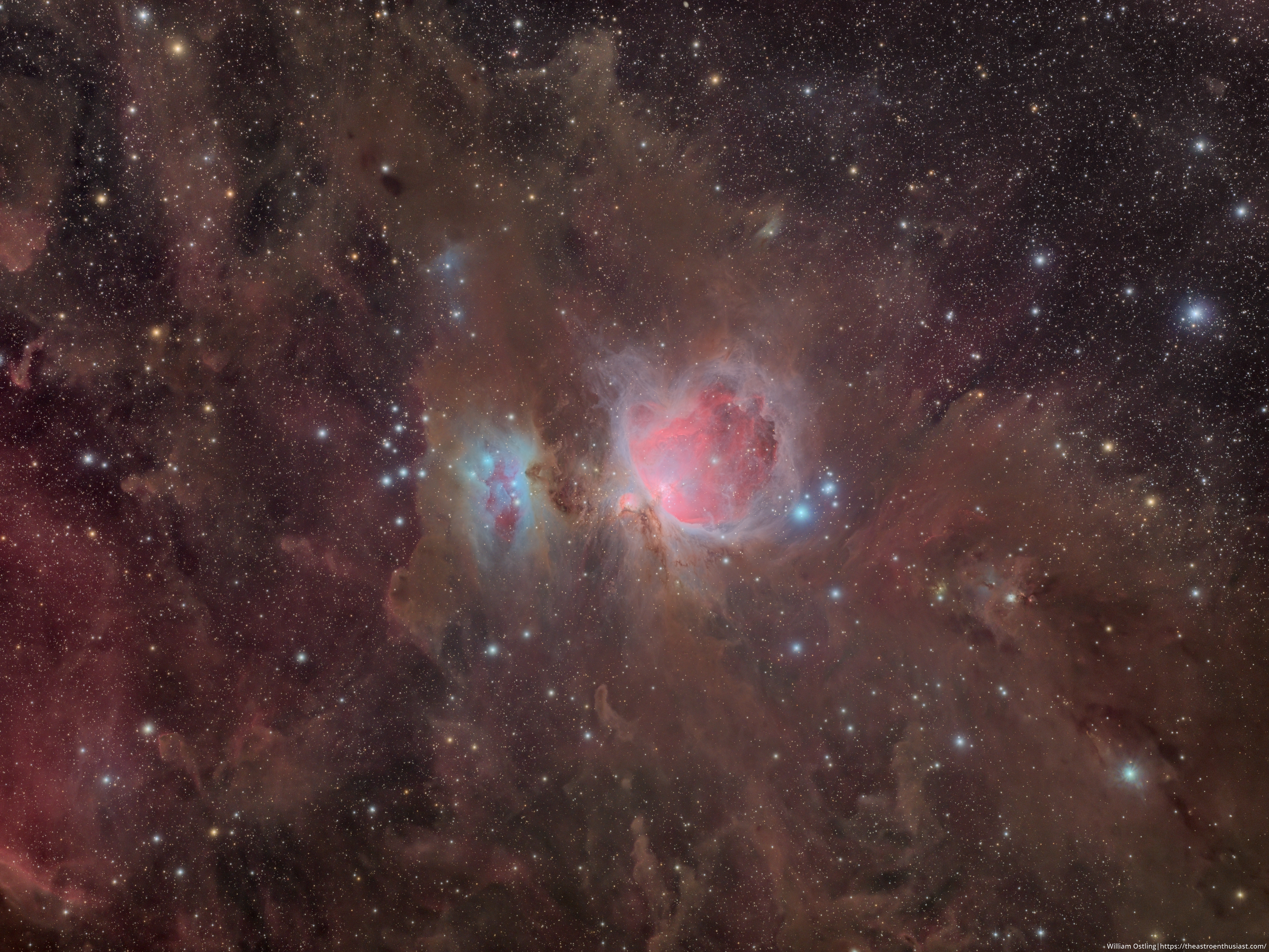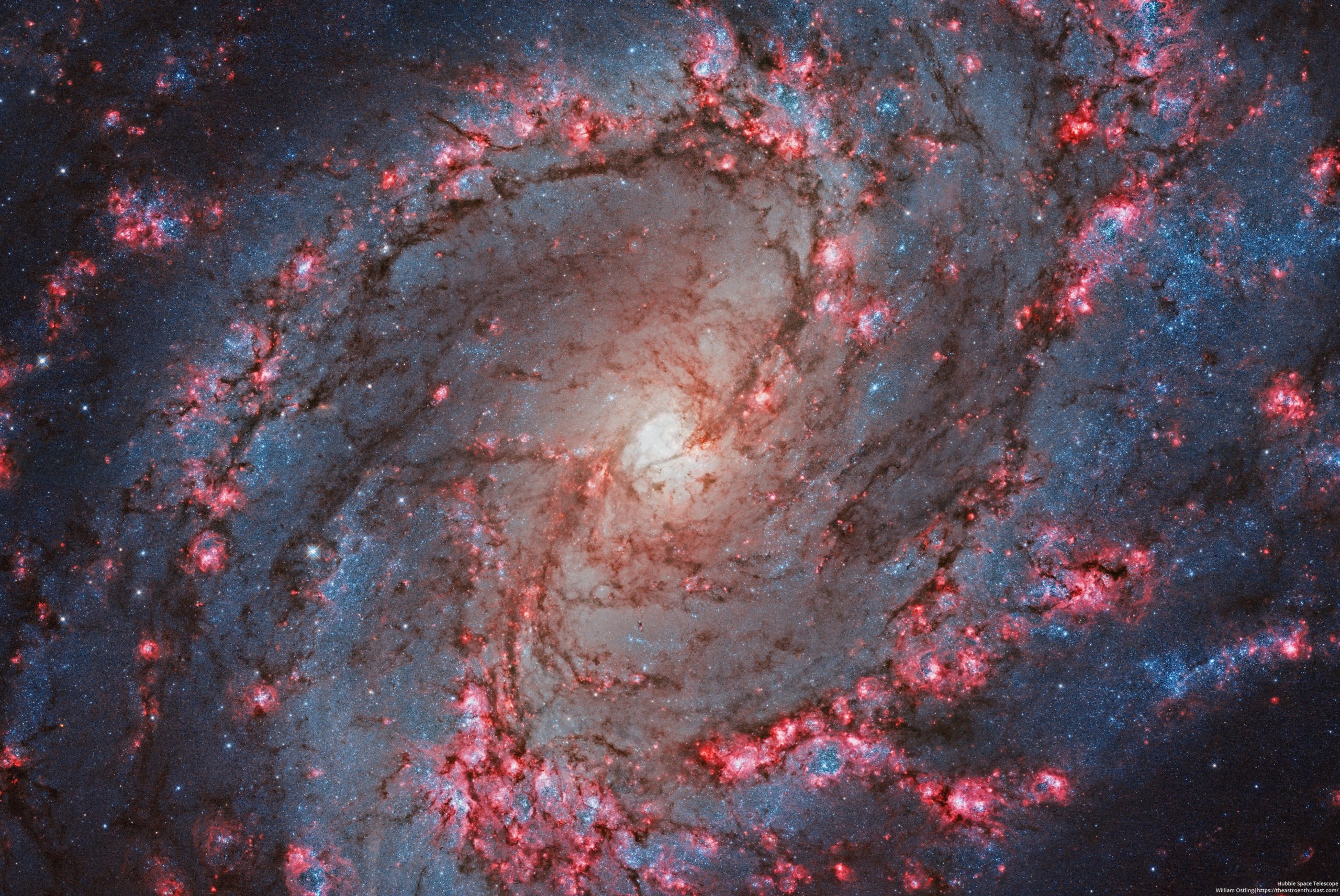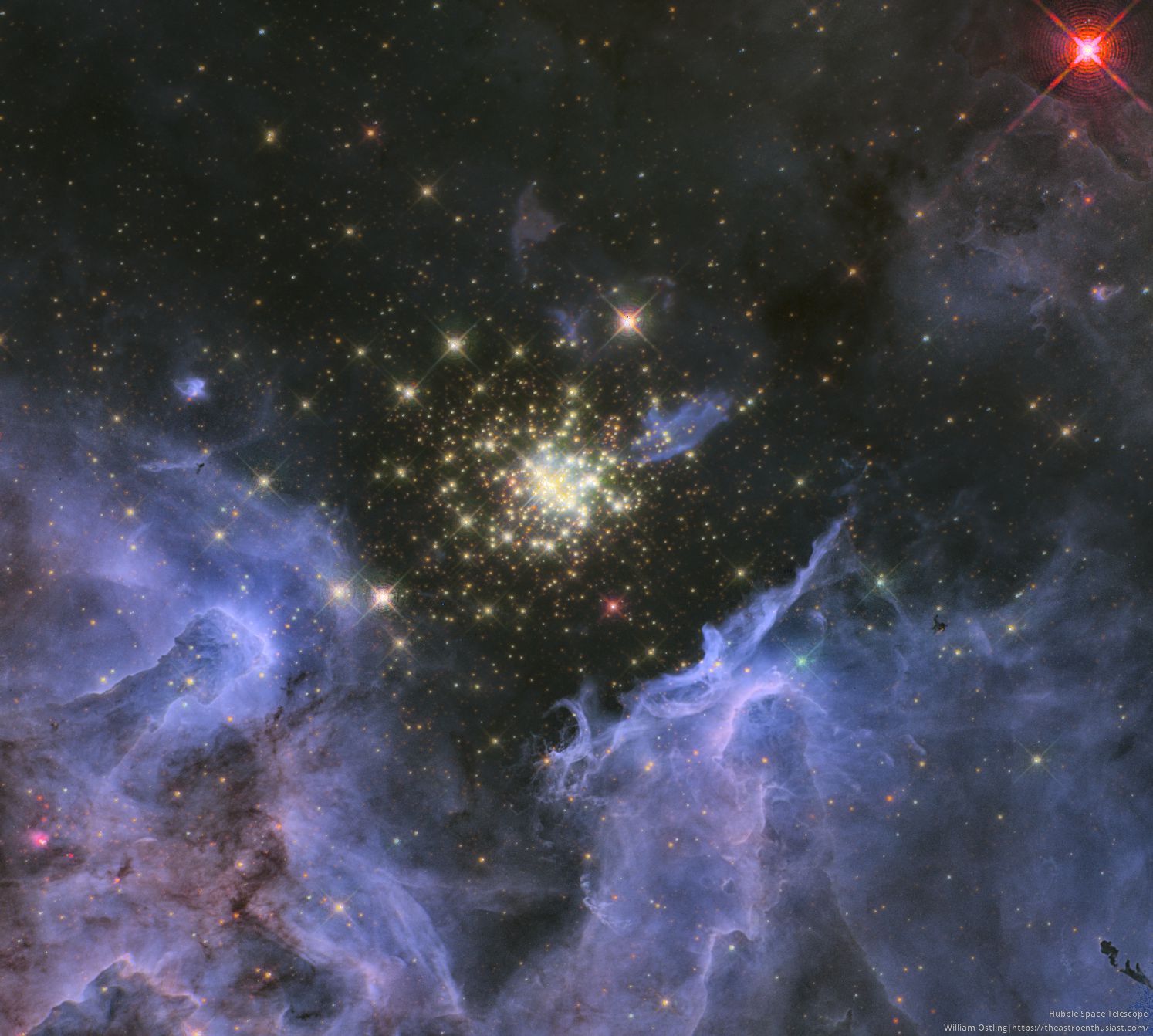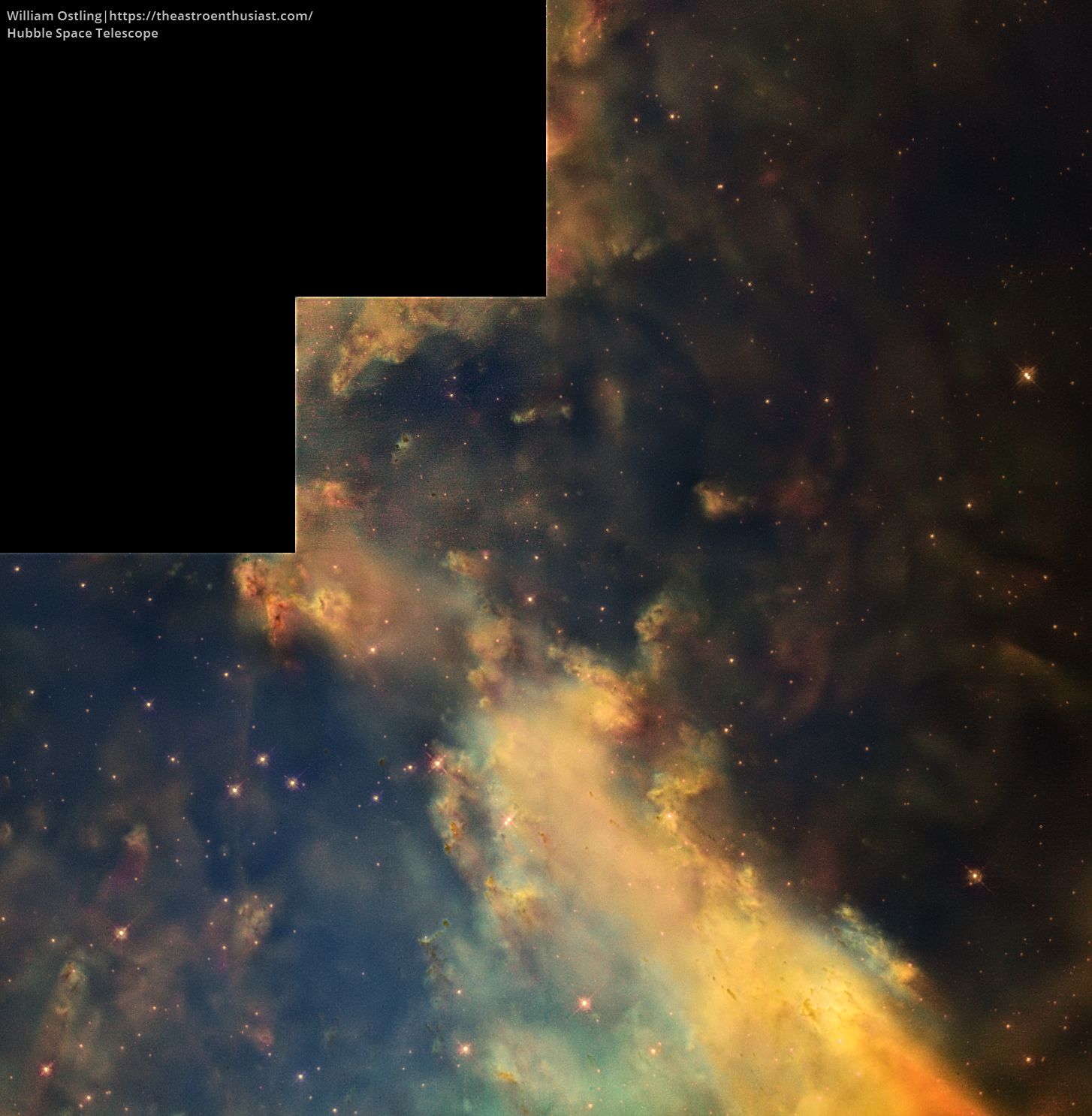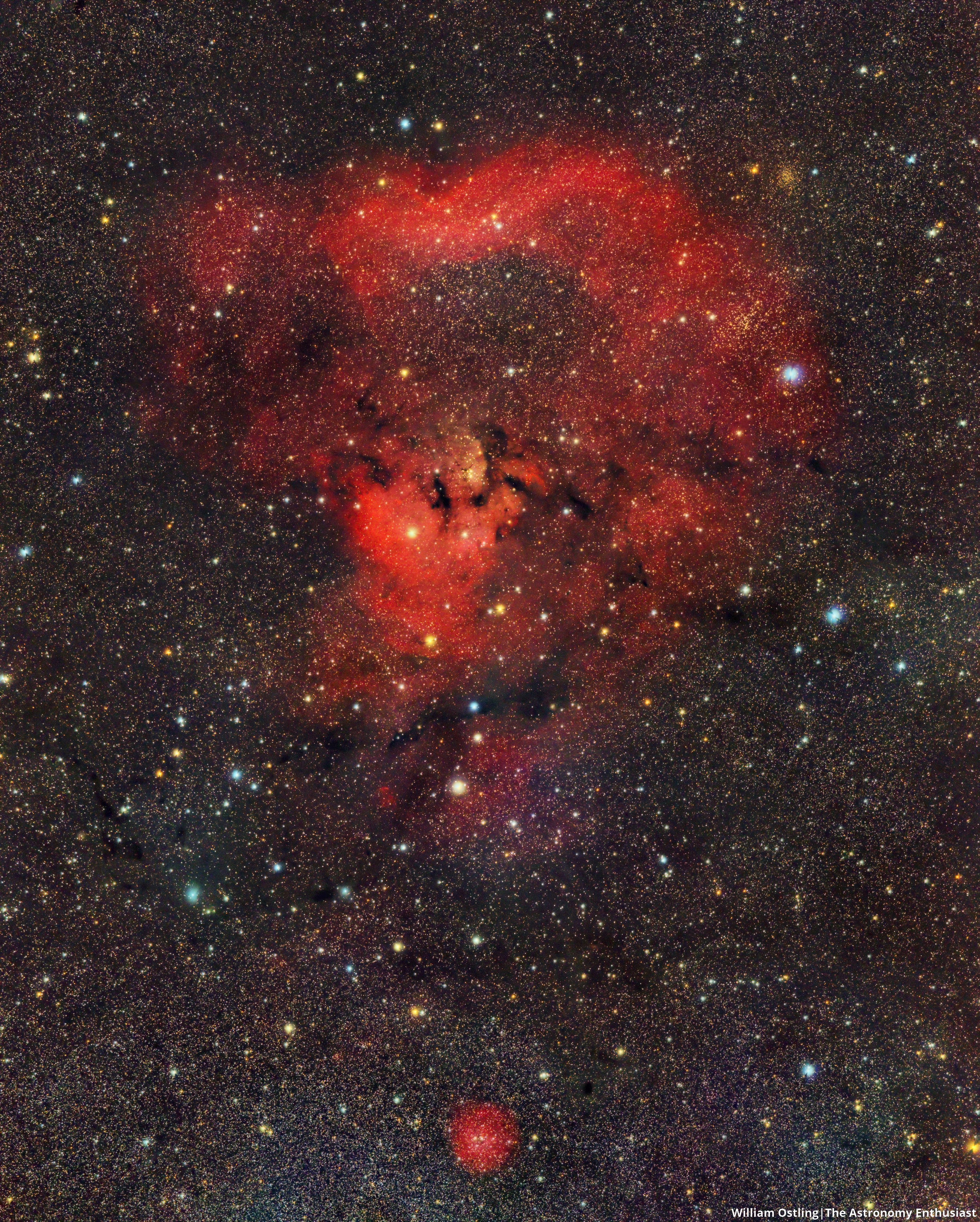NGC 5189 from Hubble
Why is this beautiful nebula so complicated ? When a star is dying, it blast away its outer layers, usually into a simple overall shape. Sometimes this shape is a sphere, sometimes a double lobe, and sometimes a ring or a helix. In this image, however, no such simple structure has emerged. To help find out why, Hubble Space Telescope recently observed NGC 5189 in Hydrogen, Oxygen and Sulfur emission lines. Previous findings indicated the existence of multiple periods of material outflow, including a recent one that […]
Read more